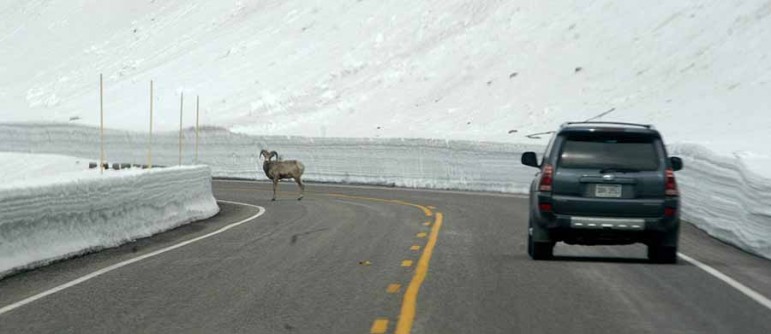
Spring is a great time to see Yellowstone National Park as the landscape begins to shed its winter garb of ice and snow. Animals are becoming more active with the change of season, and newborn wildlife begin moving through the park.
Most importantly for local residents, it’s a chance to visit Yellowstone before the summer crowds arrive, bringing traffic and congestion to the world’s first national park.
Road segments throughout the park will follow a staggered opening in the next few weeks, with the road from West Yellowstone and Mammoth Hot Springs to Old Faithful and the Grand Canyon of the Yellowstone already open for the season, allowing visitors to travel by car to two of the park’s iconic locations.
Additional road segments in the park will open during May as road clearing operations progress. To see opening dates, road construction and delays, and current road status, visit the Park Roads webpage at: https://www.nps.gov/yell/planyourvisit/parkroads.htm.
In a statement released by the park’s public affairs office, Yellowstone officials advised that it is “never too early to start planning summer trips, and we want to help visitors set realistic expectations.”
Visitation in 2015 saw a 17% increase with a record-breaking four million visits to Yellowstone. With the National Park Service celebrating its centennial year and continued lower gas prices, Yellowstone expects to see another high visitation year.
Park officials advise visitors to “expect long lines at entrance stations, crowding in parking lots, and more people in thermal basins and at popular sites throughout the park.”
Each spring, Yellowstone National Park clears snow and ice from 198 miles of main road, 124 miles of secondary roads, 125 acres of parking lots inside the park, and 31 miles of the Beartooth Highway outside the park’s Northeast Entrance in preparation for the summer season.
Spring in Yellowstone brings unpredictable weather including cold temperatures, high winds, and falling snow. Even cleared sections of roads can be narrow and covered with a layer of snow, ice and debris. Visitors should use extreme caution when driving as road clearing operations can be ongoing at any time throughout the park. In the case of extreme weather conditions, temporary road closures are also possible with little or no advance warning.
Due to the snow, walking on trails or on boardwalks through thermal areas may also be difficult for some time. Bears have emerged from hibernation in the Greater Yellowstone Area and are on the hunt for food. If you plan to hike, ski or snowshoe in the park, stay in groups of three of more, make noise on the trail, carry bear spray, and know how to use the bear spray. Yellowstone regulations require visitors stay 100 yards from black bears, grizzly bears, and wolves and 25 yards from all other large mammals. Visitors should park in pullouts and stay in vehicles when viewing roadside animals. The best defense is to stay a safe distance from wildlife and use binoculars, a telescope, or telephoto lens to get a closer look.
Very limited visitor services will be available during the next several weeks. The Albright Visitor Center, the Old Faithful Visitor Education Center (VEC), the Canyon VEC lobby with information desk, and the West Yellowstone Visitor Information Center will be open daily. The Canyon VEC exhibits and theater will open April 30. For more information, consult the park newspaper distributed at entrance stations or visit http://www.nps.gov/yell/planyourvisit/index.htm.
Travelers should be aware of specific construction projects and possible delays occurring this season. Construction on the section of roadway from ¾ miles north of Roaring Mountain north to the Moose Exhibit, 4.7 miles to the north may begin mid-May with 30-minute delays possible. From June 1 to September 11, this section of roadway will be closed 10:00 p.m. to 7:00 a.m. with a full closure in effect 10:00 p.m. September 11 to 7:00 a.m. October 7. A travel detour via Dunraven Pass, from Canyon to Tower will be available during the closure.
